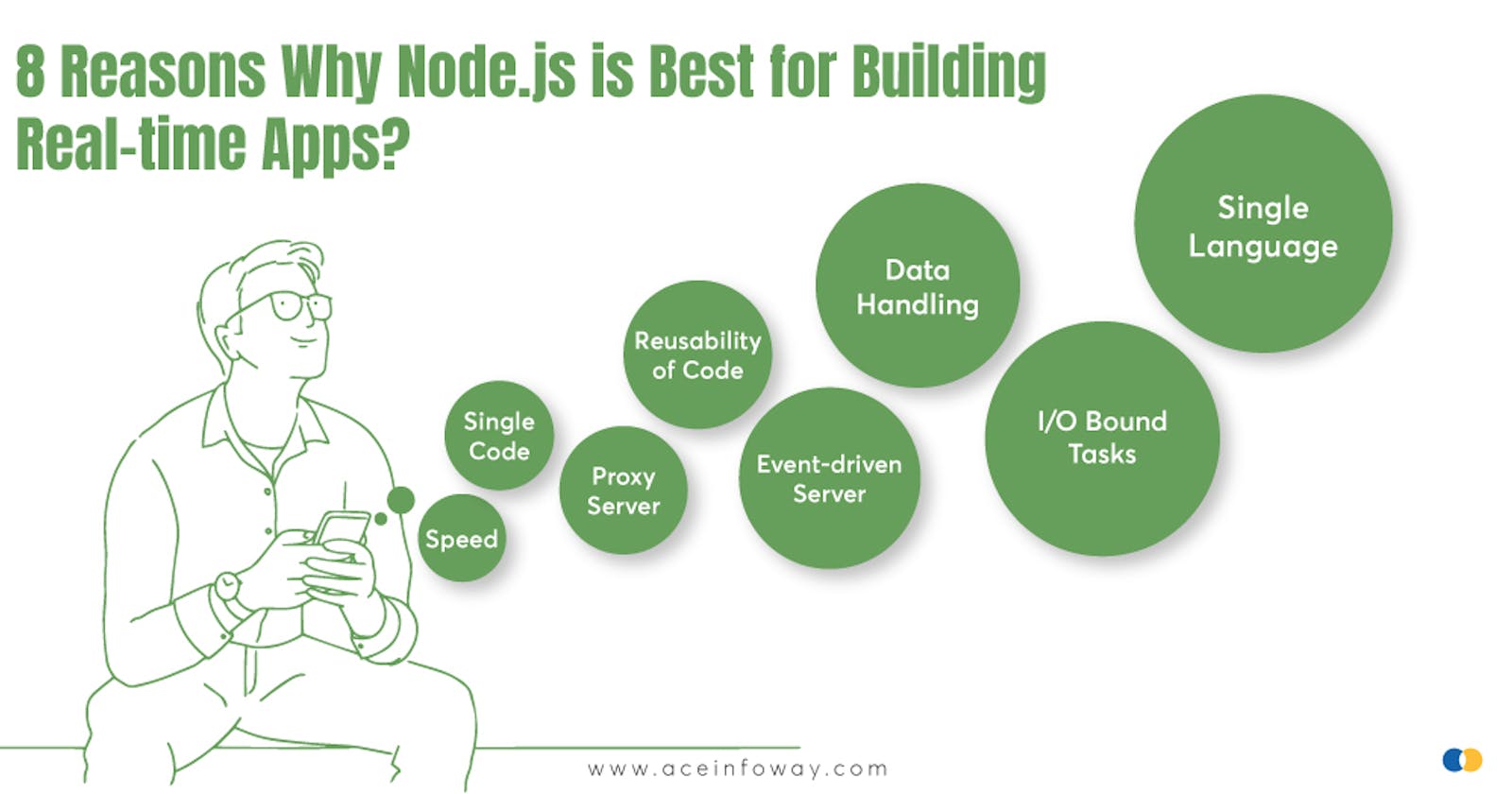A Guide to Choose Node.js to Build Real-time Apps
What is node.js used for? Node.js for real-time apps — Here are 8 reasons why Node.js is all-time best for building real-time web and apps.
We have been using lots of mobile applications to carry out day-to-day tasks. So building applications that users can interact with in real-time has become a standard for many developers. So, in the beginning, you need to be clear about which Node.js framework and library to choose for developing real-time applications — bit.ly/3P0Ymvo.
8) Single Language
It’s no surprise that Node.js is rapidly gaining popularity as a platform for developing fast, scalable, and secure real-time applications. It only uses one programming language, JavaScript, making development easier than ever. With this simplification of your project, you can maintain both backend systems because they are translated in just one file, making updates faster without having to rewrite anything or spend hours modifying code from different languages.
7) I/O Bound Tasks
The majority of your time is spent waiting for the network, filesystem, and possibly database I/O to finish. The total performance can be improved by increasing the hard drive speed or the network connection speed. Node.js is ideally suited for this type of computation in its most basic form. All I/O in Node.js is non-blocking, which means that other requests can be handled while you wait for a read or write to finish.
6) Data Handling
Node.js is powerful when it comes to working with data. For example, when on the go, your users can provide real-time updates and even add new information to your database using their smartphones or tablets. You can then execute some logic against that user’s data right away (as it comes in), or you can schedule it to be handled at regular intervals later on when you have time, whichever is ideal for your project. All of this indicates that there will be less time between events and the actions made in response to them.
5) Event-driven Server
Real-time apps, as you know, deal with a large number of users at the same time. This is where the event-driven and asynchronous nature of Node.js comes into play. Due to its non-blocking functionality, Node.js allows developers to easily manage multiple requests with an event-driven server. Furthermore, data transfer and synchronization are simple tasks for developers. Finally, data distribution to end-users will be faster and more seamless. That is why Node.js is so popular these days.
Unlock Four More, Here — bit.ly/3P0Ymvo

